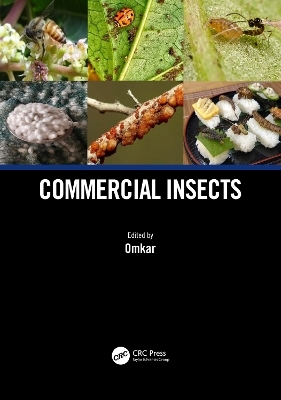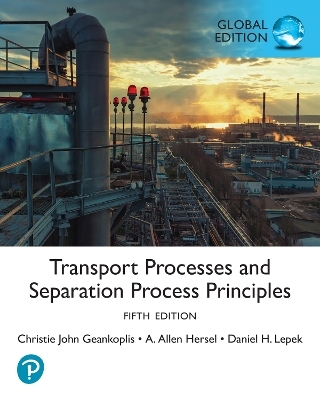
Commercial Insects
CRC Press (Verlag)
978-1-032-59495-8 (ISBN)
Despite being the biggest group of organisms inhabiting Earth in both diversity and sheer numbers, insects are barely commercialized. Most of the standard textbooks of applied entomology talk about insect pest management, and when it comes to commercial aspects of insects, only apiculture, sericulture, and lac culture are talked about. This book will help bring other commercial uses of insects and their economic potential to the fore. This will generate interest in further research on the commercial potential of insects, thereby harnessing a much-found resource.
The book has the following salient features:
1. Encompasses all major aspects of beneficial and commercial insects.
2. Deals with edible insects and mass culture of natural enemies and beneficial insects.
3. Emphasis on the mass cultivation of beneficial insects for obtaining yields.
4. Discusses stingless bees and their products.
5. Helps to solve the problem of food scarcity and improve food security.
Prof. Omkar, FNASc, associated with teaching for about 36 years and research for 44 years is a Former Head, Department of Zoology, University of Lucknow, Former Coordinator, UGC-SAP (DRS-II), DST-FIST, DST-PURSE, Centre of Excellence, Govt. of UP, programs. He has worked on 10 more projects of state/central funding agencies. He specializes in Environmental Toxicology and Entomology, with particular reference to the Insect Pest Management. He is Chief Editor, Journal of Applied Bioscience, Associate Editor, International Journal of Tropical Insect Science, Springer and President, International Society of Applied Biology. Professor Omkar has contributed following books as Author /Editor: Concepts of Toxicology (2017), Pesticides, Man & Biosphere (1998), Prof. S. B. Singh Commemoration Volume (2002), Experimental Animal Physiology & Biochemistry (2003), Modern Approaches to Insect Pest Management(2010) Kin recognition and Oviposition Strategies in aphidophagous ladybirds (2012), Monitoring and Management of Mango fruitfly (2012), Predaceous Ladybirds of Uttar Pradesh (2013), Ecofriendly Pest Management for Food Security (2016) Industrial Entomology (2017), Pests and Their Management (2018), Sucking Pests of Crops (2020), Polyphagous Pests of Crops (2021), Molecular Approaches for Sustainable Insect Pest Management (2021), Microbial Approaches for Insect Pest Management (2021), Reproductive Strategies in Insects (2021), Insects As Service Providers (2023), Parasitoids in Pest Management (2023), Insect Predators in Pest Management (2023), Comprehensive Environmental Biology, Concepts of Environmental Biology, Environmental Pollution, Biodiversity Conservation (In Press). He is a recipient of several awards, like Saraswati Samman by the Department of Higher Education, Govt. of UP; Prof. T N Ananthakrishanan Foundation Award, Rescholar Award of Excellence in Agricultural Entomlogy by Association of Entomologists, Prof. G. S. Shukla Gold Medal by The Academy of Environmental Biology, Dr. S. Pradhan Memorial Lecture Award by The Division of Entomology, Indian Agricultural Research Institute & The Entomological Society of India, New Delhi, ACCLAIM and Uddeepan awards from University of Lucknow. He is a Fellow of The Entomological Society of India, Zoological Society of India, Society for Biocontrol Advancement and Fellow of The National Academy of Sciences India (FNASc), besides many others. He has 23 books to his credit. He has published 247 Research papers, 11 Reviews, 44 Reviews as Book chapters, 16 Popular Science articles. Prof. Omkar has guided 25 Ph. D. students. He has visited the School of Biological Sciences, University of East Anglia (2006) for three months and Department of Zoology, University of South Bohemia and Czech Academy of Sciences, Ceske Budejovice, Czech Republic (May 2016) under INSA Bilateral Exchange programs.
Chapter 1
Lac Insects
K. K. Sharma
Chapter 2
Mulberry Silk Insect
Babulal, G. Mallikarjuna, S. Balasaraswathi and Omkar
Chapter 3
Tropical Tasar Insect
Manoj M. Rai, Mohan Rathod, Suvarna Wazalwar and Suresh Kumar Raina
Chapter 4
Tasar Insect – Antheraea Proylei J
Rakesh Kumar Goel
Chapter 5
Eri Silk Insect (Samia ricini, Donovan)
Subadas Singh, Dharmendra K. Jigyasu, Om Prakash Patidar, Amit Kumar and Aftab A. Shabnam
Chapter 6
Muga Silk Insect (Antheraea assamensis)
Dharmendra Kumar Jigyasu, Om Prakash Patidar, Amit Kumar and Aftab A. Shabnam
Chapter 7
Honey Bee Diversity
M. R. Srinivasan and M. S. R. Haran
Chapter 8
The Stingless Bees
M.S. Khan and Gaurava Kumar
Chapter 9
Edible Insects
Apoorva Shandilya, Geetanjali Mishra and Omkar
Chapter 10
Dye-Yielding Insects
S. Shabihe Raza Baqri and Omkar
Chapter 11
Mass Production of Insect Parasitoids
M.S. Smitha, Mani Chellappan and M.T. Ranjith
Chapter 12
Mass Production of Insect Predators
Berin Pathrose, Mani Chellappan and M.T. Ranjith
Chapter 13
Mass Production of Beneficial Insects
M.T. Ranjith and Mani Chellappan
| Erscheinungsdatum | 28.12.2023 |
|---|---|
| Zusatzinfo | 51 Tables, black and white; 6 Line drawings, black and white; 94 Halftones, black and white; 100 Illustrations, black and white |
| Verlagsort | London |
| Sprache | englisch |
| Maße | 178 x 254 mm |
| Gewicht | 820 g |
| Themenwelt | Technik ► Umwelttechnik / Biotechnologie |
| Weitere Fachgebiete ► Land- / Forstwirtschaft / Fischerei | |
| ISBN-10 | 1-032-59495-0 / 1032594950 |
| ISBN-13 | 978-1-032-59495-8 / 9781032594958 |
| Zustand | Neuware |
| Informationen gemäß Produktsicherheitsverordnung (GPSR) | |
| Haben Sie eine Frage zum Produkt? |
aus dem Bereich


